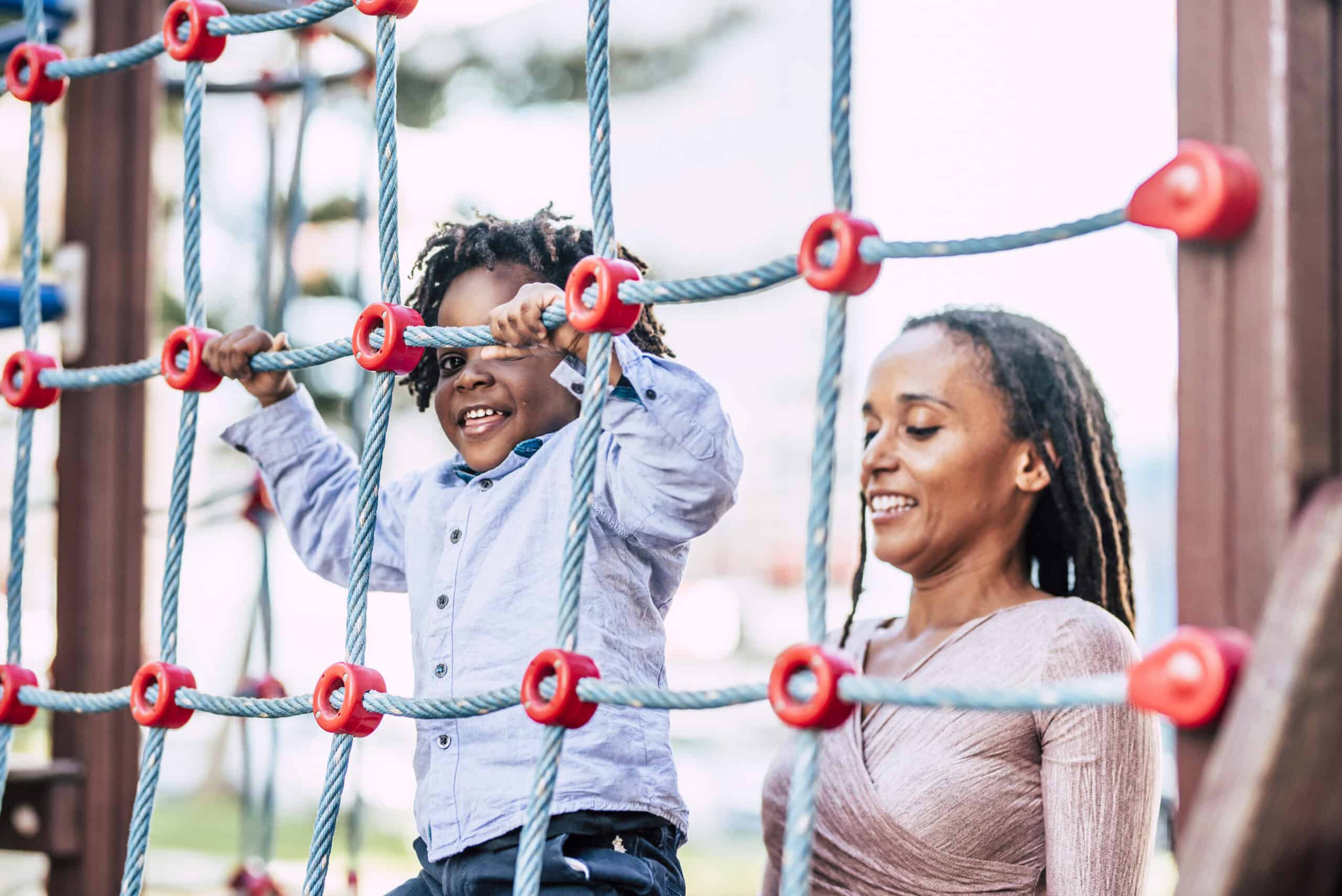Do you remember the joy of climbing trees, leaping across puddles, or play-wrestling with friends?
When was the last time you saw a child roll down a grassy hill or leap across rocks in a stream?
The Hidden Power of Play: More Than Just Fun
These simple, spontaneous moments of physical play may seem like childhood fun, but they hold much deeper value. Our modern world is packed with academic pressure, screen time, and scheduled activities and free physical play has become a lost art. However, emerging science paints a very different picture: unstructured physical play is a biological necessity – especially for children. It is a catalyst for brain development, social-emotional growth and long-term psychological resilience.
These insights align with foundational theories such as enactivism, which proposes that cognition does not occur solely in the brain but emerges from the dynamic interaction between the body, the environment, and sensorimotor experience (13). In this view, physical play is not just movement—it is thinking, learning, and being in motion.
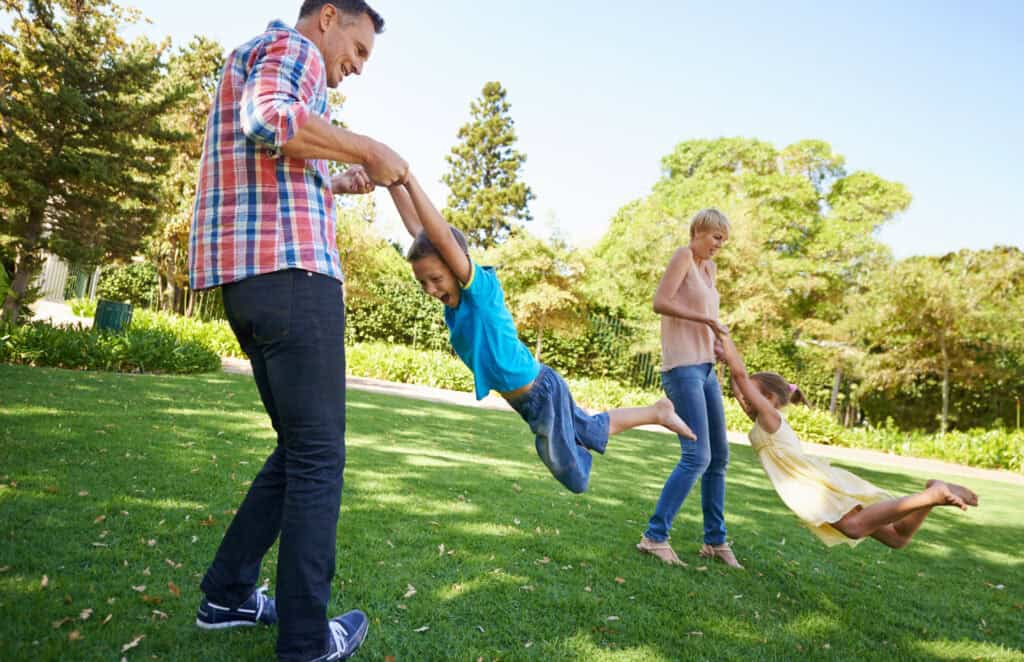
How Physical Play Fuels Brain Development
Physical play – particularly the type that involves rolling, chasing, jumping, or balancing – activates multiple brain systems simultaneously. These include the vestibular system (balance), the proprioceptive system (body awareness), and the prefrontal cortex, which governs executive functions like impulse control and decision-making.
Additionally, regular physical play can increase brain-derived neurotrophic factor (BDNF) levels by 20-30%, a key molecule involved in neural growth and learning (11). Executive function performance can improve by approximately 20-25% in children who engage in consistent physical activity (10).
Understanding Correlation vs. Causation
However, it’s important to note that much of this data is correlational. While children who engage in regular physical play often demonstrate better emotional regulation and executive function, it is not always clear whether the play causes these improvements—or whether children with naturally stronger self-regulation are more inclined to participate in active, cooperative play. This bidirectional relationship warrants caution in assuming causality.
Regulating Stress Through Whole-Body Movement
Studies show that these forms of “whole-body” movement help fine-tune the brain’s stress-response system. Active play modulates the hypothalamic-pituitary-adrenal (HPA) axis, helping children respond to stress more effectively while maintaining emotional balance (6). This process, repeated during childhood, contributes to the development of stress resilience – the capacity to recover quickly from difficulties.
This regulatory function aligns with broader principles of emotional resilience. For a deeper dive into how stress responses can be rewired through daily practices, see The Science of Emotional Resilience.
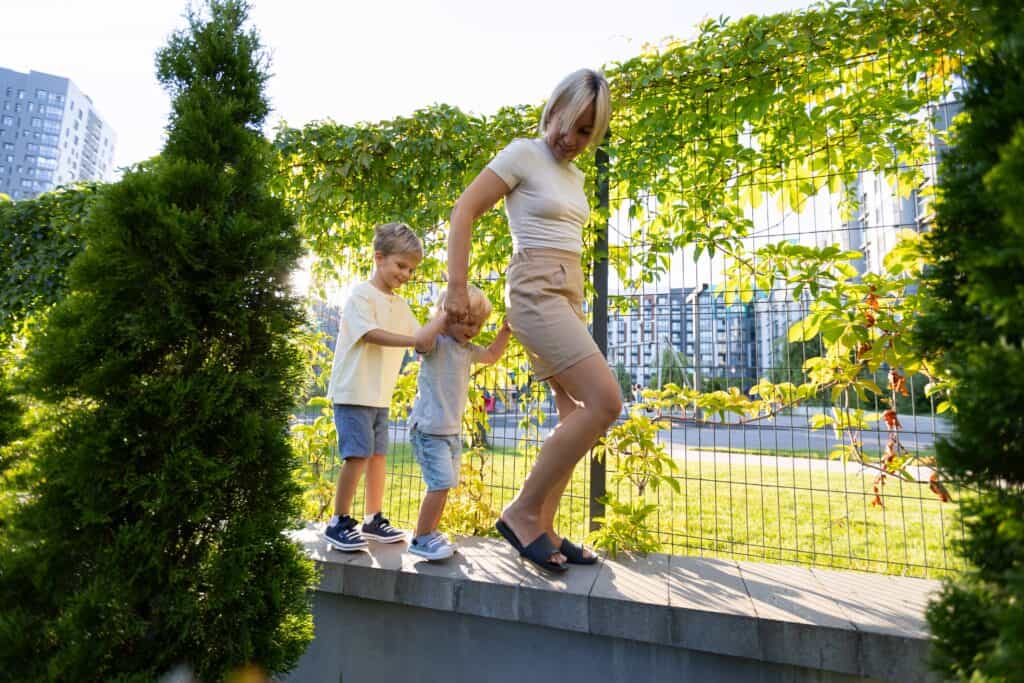
Rewiring the Brain for Long-Term Resilience
In addition, in situ hybridisation studies show that play increases expression of plasticity-related genes in the amygdala—an emotion-regulating hub (14). These findings suggest that free movement may not only reduce stress acutely, but also contribute to long-term restructuring of emotional resilience circuits.
Neuroscience Insight
Beyond balance and stress regulation, physical play also activates the brain’s mirror neuron system—a network of cells that fire both when we perform an action and when we observe someone else doing it. This system plays a key role in developing empathy, social understanding and emotional attunement.
When children engage in cooperative or competitive play, like roughhousing or chasing games, their brains are not only processing their own movements but also interpreting others’ intentions and emotions in real time. This neurological mirroring helps them build theory of mind- the ability to understand that others have thoughts, feelings and perspectives different from their own.
Emerging research suggests that this system is especially active during dynamic, real-world interaction, making physical play a natural training ground for emotional intelligence and interpersonal skills (7).

Age-Appropriate Play: From Childhood to Adolescence
However, it’s important to note that the developmental role of play is not static. The types of physical play that benefit young children may not hold the same value for older children and adolescents.
For example, toddlers benefit most from sensorimotor and caregiver-supported physical exploration, while children in middle childhood begin to develop social-emotional regulation through rough-and-tumble games. Adolescents, by contrast, often gain more from autonomy-based and peer-driven physical activities such as sports, dance crews, or group challenges—contexts where they practice leadership, cooperation, and identity formation.
The optimal form and function of play shift with age, and so too should how we support it.
Rough-and-Tumble Play Builds Social Brains
Not all play is equal (but all play a very important role in child development). Rough-and-tumble play – the physical, energetic and usually laughter-filled scuffles common in healthy childhood – is uniquely potent in developing social intelligence. These interactions teach children how to recognise emotional cues, set boundaries, take turns and self-regulate. In fact, roughhousing may be the earliest form of empathy training for children.
What Animal Studies Teach Us About Social Development
Animal studies confirm this. Rats deprived of play during critical developmental periods show deficits in social behaviour, impulse control, and adaptive responses to novelty later in life (8). These same deficits are often observed in children who lack sufficient opportunities for physical, free play. While these animal models are informative, they do not always translate directly to human outcomes. In human studies, the observed benefits of physical play often reflect association rather than clear causality.
Still, it’s important to emphasise that rough-and-tumble play is most developmentally beneficial in early and middle childhood. For teens, the social and cognitive functions of play often emerge through more structured peer-led physical activities.
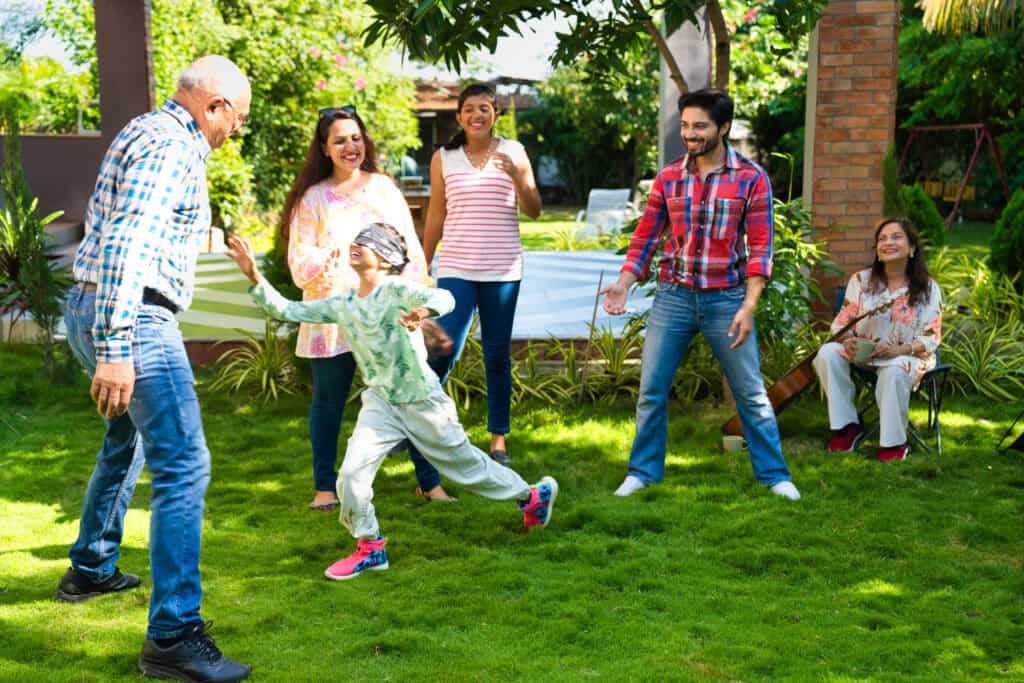
Gender, Culture, and the Expression of Physical Play
However, rough play is not experienced or expressed identically by all children. Research suggests that boys, on average, engage more frequently in overt rough-and-tumble play, while girls may express physicality in more cooperative or rhythm-based forms (e.g., dance or clapping games). These patterns are influenced by both biology and socialisation—and do not imply fixed preferences. Likewise, cultural norms significantly shape how physical play is encouraged, restricted, or interpreted. In some cultures, active outdoor play is a rite of passage; in others, it may be tightly regulated by ideas about gender roles, safety, or respectability. Recognising these nuances helps ensure play-based interventions are inclusive, context-sensitive, and respectful of diverse values.
Attachment Through Play: Strengthening Bonds with Caregivers
The benefits of physical play are also strongly supported by attachment theory. Parent-child rough-and-tumble play provides critical opportunities for emotional co-regulation, attunement, and trust-building. When caregivers join in physical games—modulating intensity, pausing when needed, and responding to a child’s cues—they help strengthen secure attachment bonds and teach self-regulation through embodied interaction.
By tuning into your child’s cues during physical play, you may also begin to better understand their underlying needs. For support interpreting these behaviours, visit Understanding Challenging Behaviours in Children.
PAUSE AND REFLECT
Think of a moment when your child was deep in physical play – sweaty, muddy, laughing uncontrollably.
What skills were they practicing in that moment? Balance? Communication? Courage?
How might those experiences be shaping the way they face challenges today?
Brain Plasticity and Physical Movement
Children’s brains are in a state of heightened neuroplasticity, constantly wiring and rewiring based on sensory input. Physical play enriches this wiring by increasing sensorimotor integration – how the brain interprets information from the body and environment. Activities like balancing, spinning and navigating playground equipment challenge the cerebellum and prefrontal cortex, strengthening neural networks involved in both motor control and cognitive flexibility.
Furthermore, movement increases the levels of brain-derived neurotrophic factor (BDNF), which supports the growth of new neurons and synapses. This contributes not just to physical coordination but to learning and memory consolidation (9).
These sensory-rich interactions are particularly beneficial for children with neurodivergent processing styles. See How Music and Movement Support Neurodivergent Children for an inclusive lens on sensory-motor development.
Building Emotional and Cognitive Resilience
Physical play offers a natural context for risk-taking, failure and adaptation – key ingredients in building resilience. When a child jumps from a rock, misses a catch, or stumbles in a game, they’re rehearsing how to recover from setbacks. These “failures” help them build grit, emotional flexibility and self-efficacy, which are protective against anxiety and depression later in life.
Research published in Frontiers in Behavioural Neuroscience confirms that physical activity can buffer the effects of chronic stress on the adolescent brain, particularly by improving emotion regulation circuits and reducing the likelihood of internalising problems like anxiety (4).
These embodied risk-taking moments reflect the universal path of challenge and growth. For a story-based perspective on how children learn resilience, explore The Power of the Hero’s Journey in Teaching Young People Resilience.

The Role of Nature, Imagination and Risk
Free play in natural settings – such as climbing trees, playing tag in the woods, or balancing on logs – provides children with complex environments that stimulate problem-solving, imaginative thinking and sensory integration. Risky play, though often discouraged by modern safety norms, helps children learn how to assess danger and develop autonomy.
According to a position paper from the Healthy Active Living and Obesity Research Group, active outdoor play is essential for children’s physical and mental wellbeing and should be prioritised over overly cautious restrictions (5).
Barriers to Play and Evidence-Based Solutions
While unstructured play is vital, several barriers prevent families from prioritising it:
- Parental time constraints – Busy schedules and work demands leave limited time for outdoor or unstructured play. Solutions include integrating micro-play moments into daily routines (e.g., walking or cycling to school) and using active chores to encourage movement.
- Urban safety concerns – Lack of safe spaces, traffic, and neighbourhood safety issues deter parents from allowing outdoor play. Research suggests that community initiatives such as “play streets,” where certain streets are closed to traffic during specific hours, significantly increase children’s physical activity levels (12).
- Access to green spaces – Socioeconomic disparities limit access to parks and green areas. Policy-driven solutions include advocating for more public green spaces and safe play zones in underserved communities.

Cultural Connection
Around the globe, different cultures embrace physical play in ways that reflect their values and environments. Here are a few examples that highlight the universal importance of movement:
- Scandinavia – Outdoor Kindergarten (Friluftsliv)
In Norway and Finland, “forest schools” immerse young children in outdoor exploration year-round, regardless of weather. This approach nurtures resilience, independence and risk assessment skills.
- Japan – Parkour-Inspired Playgrounds
Japanese preschools often include uneven terrain, open water features, and high climbing structures. Children are trusted to take risks, learning to assess danger and develop autonomy from an early age.
- New Zealand – “Loose Parts” Play
Many Kiwi schools offer unstructured materials like ropes, tires and planks during recess. This encourages problem-solving, teamwork and creativity through physical experimentation.
- Indigenous Communities – Storytelling Through Movement
Among various Indigenous groups in North America and Australia, traditional games combine storytelling, rhythm and physicality, blending cultural education with movement.These diverse traditions highlight how physical play is both universal and locally specific. Gender norms, environmental access, and historical traditions all shape how play unfolds—reminding us that movement is deeply cultural, not just developmental.
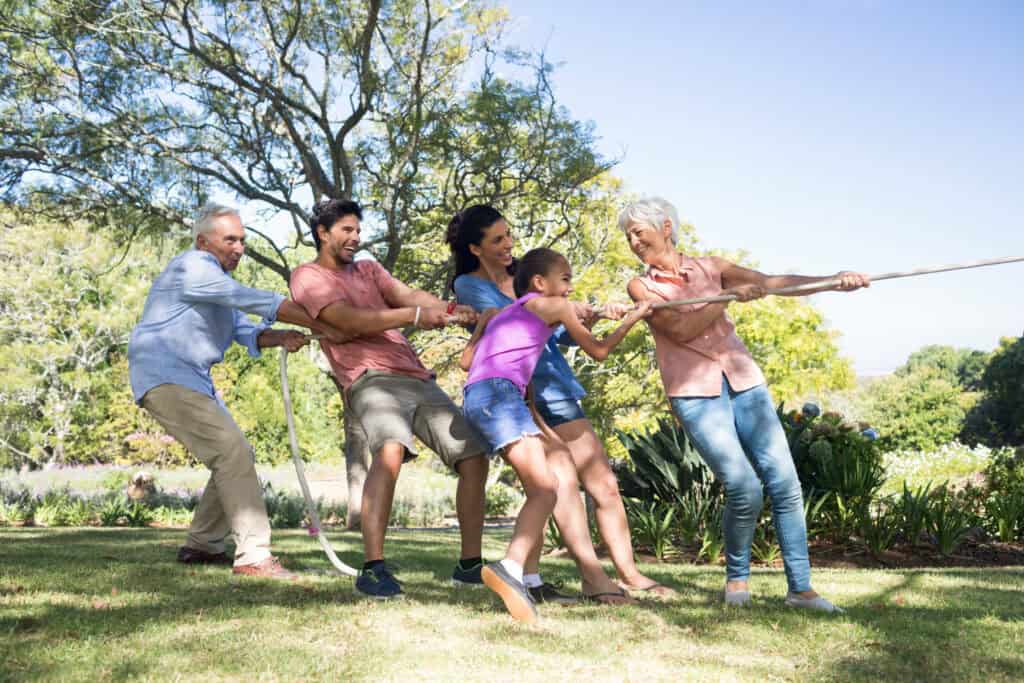
Supporting Resilient Play at Home
Even in urban or busy settings, you can create environments that support brain-boosting play. Here’s how:
- Make time for unstructured outdoor play every day—even if it’s just 15–30 minutes in the backyard, at a local park, or on a safe sidewalk.
- Reintroduce rough-and-tumble games like tug-of-war, wrestling on soft surfaces, or obstacle courses. Guide safety, but don’t micromanage.
- Allow for safe risk – climbing trees, navigating logs, or jumping from modest heights builds confidence and real-world problem-solving.
- Limit screen time intentionally by creating digital-free windows for movement-rich activities.
- Join in! Physical play is contagious. When adults model movement, kids feel validated in their energy and enthusiasm.
These simple home strategies mirror the core principles of building emotional resilience in childhood. You can explore more parenting-focused strategies in How Can Parents Build Emotional Resilience in Children?
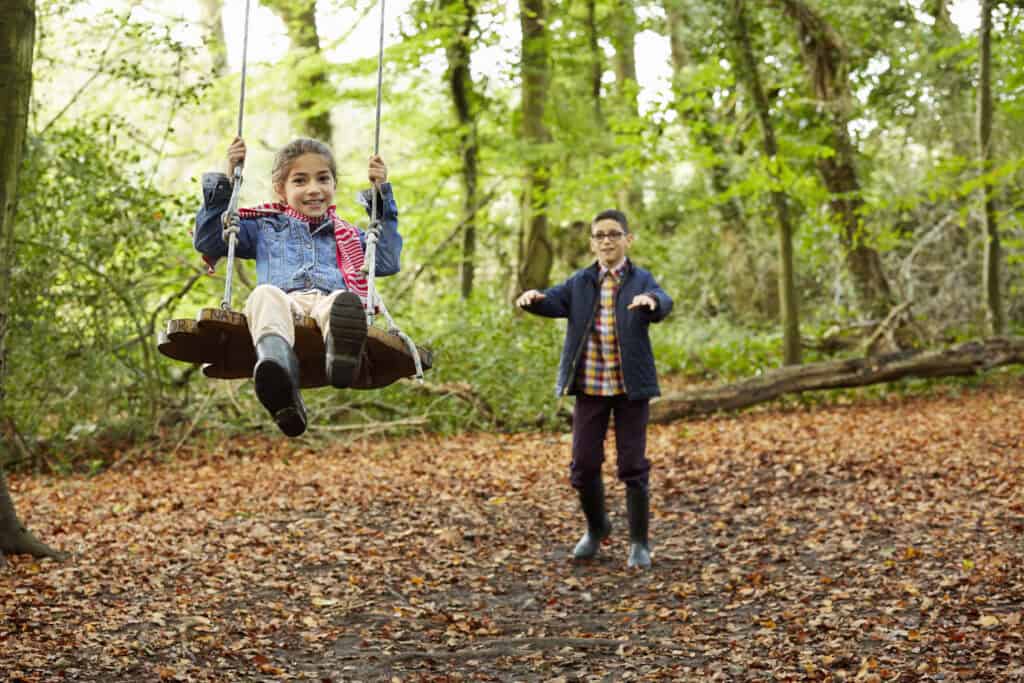
Free Resources to Support Brain-Boosting Play
Physical play is more than fun—it’s foundational. Whether you’re a parent, educator, or caregiver, these free resources can help you nurture whole-body learning and emotional growth at home:
- 8 Senses Scavenger Hunt – Discover the hidden sensory world around you. This printable activity helps children activate all eight senses through joyful, movement-based exploration.
- Monthly Play Ideas – Keep the play going all year round with seasonal ideas that build physical, emotional, and cognitive strength—without screens.
- Types of Play Checklist – Identify which forms of play your child gravitates toward and discover new ways to support balanced development through diverse activities.
- Play Ideas from Around the World – Celebrate cultural richness in movement. This guide shares physical games and traditions from global communities to spark imaginative and inclusive play.
- Incorporating Music Into Daily Activities – Learn how rhythm, dance, and sound can regulate the nervous system and enhance social-emotional learning—especially for neurodivergent children.
All resources are completely free for our subscribers. Sign up here to download, print, and share with your community.
Let Them Tumble
From neural growth to emotional regulation, physical play is a full-spectrum developmental tool. It sculpts not only strong bodies but resilient, adaptive brains.
In giving children the freedom to tumble, jump and roughhouse, we offer them more than fun – we offer them the neurological foundation for facing life’s challenges with confidence and creativity.

Reflect
Want to support resilient kids? Start by protecting time for movement.
Block out 30 minutes this week for unstructured outdoor play – no agenda, just freedom.
References:
- Hewes, J. (2014). Seeking balance in motion: The role of spontaneous free play in promoting social and emotional health in early childhood care and education. Children, 1(3), 280–301. https://doi.org/10.3390/children1030280
- Whitebread, D. (2014). The Power of Physical Play: Development & Effective learning. https://www.sirenfilms.co.uk/wp-content/uploads/2014/01/The-Power-of-Physical-Play.pdf
- Belcher, B. R., Zink, J., Azad, A., Campbell, C. E., Chakravartti, S. P., & Herting, M. M. (2020). The roles of Physical activity, exercise, and fitness in Promoting resilience during Adolescence: Effects on Mental Well-Being and Brain Development. Biological Psychiatry Cognitive Neuroscience and Neuroimaging, 6(2), 225–237. https://doi.org/10.1016/j.bpsc.2020.08.005
- Arida, R. M., & Teixeira-Machado, L. (2021). The contribution of physical exercise to brain resilience. Frontiers in Behavioural Neuroscience, 14. https://doi.org/10.3389/fnbeh.2020.626769
- Tremblay, M.S., et al., (2018). Expert Statement on Physical Activity and Brain Health in Children and Youth. Participaction. https://education.msu.edu/kin/hbcl/_articles/Tremblay_2018_ExpertStatementOnPhysical.pdf
- Farley, J. P., & Kim-Spoon, J. (2015). Parenting and Adolescent Self-Regulation mediate between family socioeconomic status and adolescent adjustment. The Journal of Early Adolescence, 37(4), 502–524. https://doi.org/10.1177/0272431615611253
- Gallese, V., & Goldman, A. I. (1998). Mirror neurons and the simulation theory of mind-reading. Trends in Cognitive Sciences, 2(12), 493–501. https://doi.org/10.1016/s1364-6613(98)01262-5
- Pellis, S. M., Pellis, V. C., Ham, J. R., & Stark, R. A. (2023). Play fighting and the development of the social brain: The rat’s tale. Neuroscience & Biobehavioural Reviews, 145, 105037. https://doi.org/10.1016/j.neubiorev.2023.105037
- Donnelly, J. E., Hillman, C. H., Castelli, D., Etnier, J. L., Lee, S., Tomporowski, P., Lambourne, K., & Szabo-Reed, A. N. (2016). Physical activity, fitness, cognitive function, and academic achievement in children. Medicine & Science in Sports & Exercise, 48(6), 1197–1222. https://doi.org/10.1249/mss.0000000000000901
- Bai, J., Huang, H., & Ouyang, H. (2022, June 15). Effects of Group-Play moderate to vigorous intensity physical activity intervention on executive function and motor skills in 4- to 5-Year-Old preschoolers: a pilot cluster randomized controlled trial. Frontiers in Psychology, 13. https://doi.org/10.3389/fpsyg.2022.847785
- Latomme, J., Calders, P., Van Waelvelde, H., Mariën, T., & De Craemer, M. (2022, April 20). The Role of Brain-Derived Neurotrophic Factor (BDNF) in the Relation between Physical Activity and Executive Functioning in Children. Children, 9(5), 596. https://doi.org/10.3390/children9050596
- McCormack, G. R., Naish, C., Petersen, J., Ghoneim, D., & Doyle-Baker, P. K. (2024, September 30). It is child’s play: Caregiver and playworker perspectives on a community park-based unstructured play program. PLoS One, 19(9), e0311293. https://doi.org/10.1371/journal.pone.0311293
- EnActivism | Internet Encyclopedia of Philosophy. (n.d.). https://iep.utm.edu/enactivism/
- Šimić, G., et al. (2021). Understanding Emotions: Origins and roles of the amygdala. Biomolecules, 11(6), 823. https://doi.org/10.3390/biom11060823
This piece was written for you by
Making complex ideas accessible and sparking meaningful conversations.
